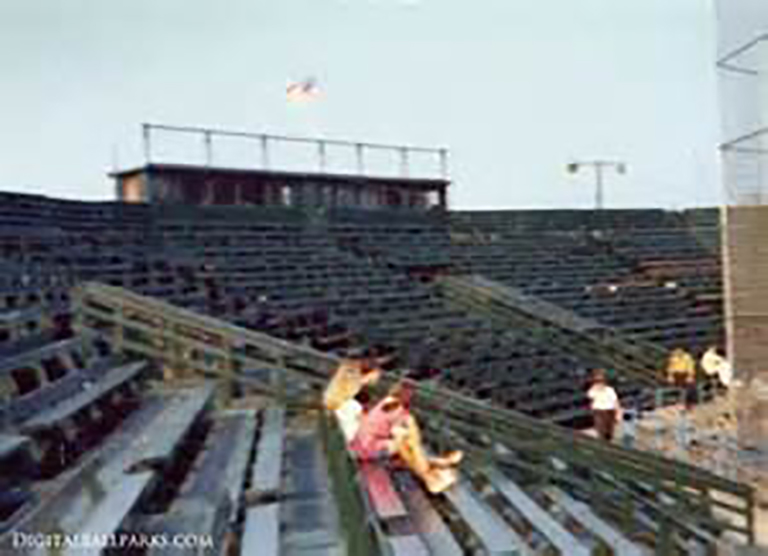
Last week’s column by syndicated writer and National Review editor Rich Lowry was a fascinating read for someone like this writer. He reviewed the new book, “Ballpark – Baseball and the American City” by Paul Goldberger. The development of the baseball stadium has always been of interest to me and how the game developed during that time.
Alexander Cartwright, rather than Abner Doubleday, is considered the pater familias of baseball as we know it today. Bat and ball games had always been around since Colonial times, with each town or region having its own variation on the game. In true baseball style, the game developed around two major styles of play, the New York and the Boston.
The New York brand was a variation of the British game of “Rounders,” while the other was a bit different with four bases, but with the batter in a place other than where we would consider home. It was the New York style of the game that Cartwright perfected with his rules.

It was he who came up with 90-foot base paths (he used 42 paces), and the tag or step on the base rather than hitting the runner with the ball. His New York Knickerbockers were players who tried the new game, along with cricket, to while away some hours. When fields in New York became unavailable, he moved to Hoboken’s Elysian Fields. The games were won when 21 “aces” or runs were scored. The Knicks didn’t do so well in its opening game, losing badly.
The development of the game from those first games to the game we know today is fascinating as well. The term “pitcher” has morphed into something other than what it originally meant. To “pitch” the ball meant to throw it in such a way so it could be hit. Much like fast-pitch softball, the ball was thrown underhanded, and then hit and fielded.
The idea that a pitcher should use deceptive grips and make the ball drop or curve was frowned upon. Even the President of Harvard thought such tactics were against the spirit of the game.
But, the game changed from those early days, and parks became important, especially when, in the true American spirit, people thought they could make money off the venture. Enclosed parks and admissions brought about a new era — and led to the professional leagues of today.
America grew up with baseball. The nation changed, and the game changed. From wooden stands that held about 2000, grew parks that packed in 15,000. The history of the Polo Grounds from a field in midtown to a park in Coogan’s Bluff is an interesting tale of money, politics, Tammany Hall and self-indulgent owners.
The Baker Bowl in Philadelphia was the first attempt at a concrete and wooden structure. It held about 20,000 when it was opened in 1887. It was the first “modern” park. It had many problems, including the fact its wooden grandstand was allowed to deteriorate. The Phillies played there until 1938, when they moved to Shibe Park and shared with the Athletics.
In fact, Shibe Park and Forbes Field, in Pittsburgh, are the first steel and concrete stadiums, and boasted some great architecture besides. Both closed at about the same time, giving way to cookie-cutter parks that doubled as baseball and football venues.
The Polo Grounds was opened three years later as was Tiger Stadium and Fenway Park. Only Fenway remains. Braves Field opened in 1914 in Boston and was a yawning field with the longest fences in the bigs.
Baseball and the baseball park are intertwined into the history of many great cities towns. Our own city had Donovan Field nestled on the edges of Savin Rock Amusement Park, which served the city and its professional and semi-professional teams for decades.
Quigley Stadium was first opened up in 1947 for the West Haven Sailors, a team that still holds memories for many Westies. West Haven Municipal Stadium became Quigley, named after Moe Quigley, who ran the team.
The stadium was built using benches from former observations cars for the Yale-Harvard Regatta in New London. It also boasted lights, the stanchions of which are still standing.
In the 1970s, the Eastern League West Haven Yankees played there with Dave Righetti as its star pitcher. More than 4,000 attended opening night. But, like many things, the novelty wore off, the teams were fair, and attendance dropped off. The team moved to Portsmouth, NH.
The stands are gone at Quigley are gone, replaced by aluminum bleachers. Only the field box areas remain of the old ball park. The city has changed. Much like the cities in the major leagues, and the major leagues themselves teams grew and died, moved and moved again. The Braves moved to Milwaukee and then Atlanta, the Athletics moved from Philly to Kansas City to Oakland.
I look forward to reading this latest opus, and adding it to my own collection of books that follow the development of the nation’s game, and its cities.